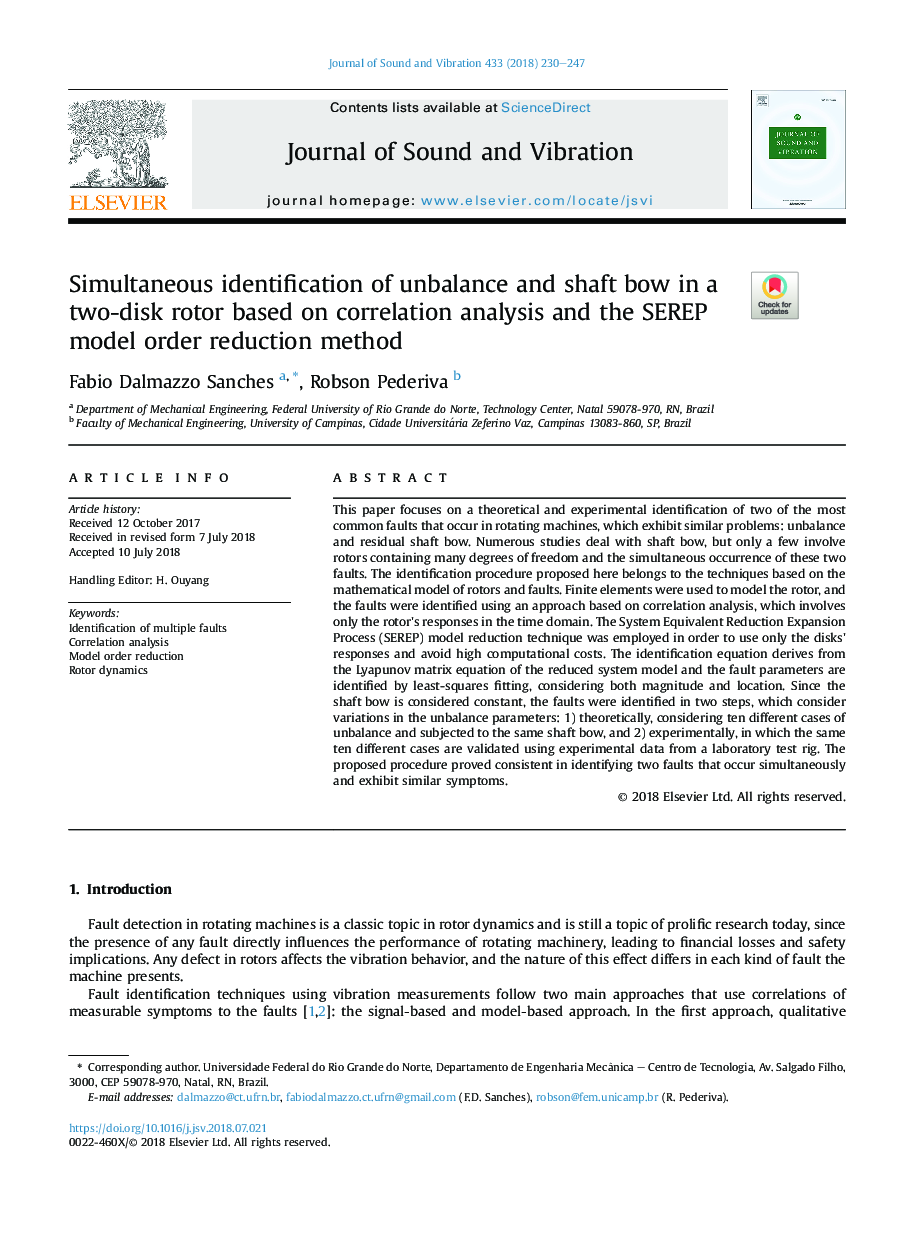| Article ID | Journal | Published Year | Pages | File Type |
|---|---|---|---|---|
| 6752694 | Journal of Sound and Vibration | 2018 | 18 Pages |
Abstract
This paper focuses on a theoretical and experimental identification of two of the most common faults that occur in rotating machines, which exhibit similar problems: unbalance and residual shaft bow. Numerous studies deal with shaft bow, but only a few involve rotors containing many degrees of freedom and the simultaneous occurrence of these two faults. The identification procedure proposed here belongs to the techniques based on the mathematical model of rotors and faults. Finite elements were used to model the rotor, and the faults were identified using an approach based on correlation analysis, which involves only the rotor's responses in the time domain. The System Equivalent Reduction Expansion Process (SEREP) model reduction technique was employed in order to use only the disks' responses and avoid high computational costs. The identification equation derives from the Lyapunov matrix equation of the reduced system model and the fault parameters are identified by least-squares fitting, considering both magnitude and location. Since the shaft bow is considered constant, the faults were identified in two steps, which consider variations in the unbalance parameters: 1) theoretically, considering ten different cases of unbalance and subjected to the same shaft bow, and 2) experimentally, in which the same ten different cases are validated using experimental data from a laboratory test rig. The proposed procedure proved consistent in identifying two faults that occur simultaneously and exhibit similar symptoms.
Related Topics
Physical Sciences and Engineering
Engineering
Civil and Structural Engineering
Authors
Fabio Dalmazzo Sanches, Robson Pederiva,
